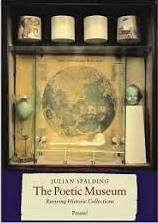
Shortly after I took up my post as keeper of the Mappin Art Gallery in 1971, I was searching through the stores when I discovered a few valuable remnants of Ruskin’s Sheffield Museum. His drawing of a Peacock’s Breast Feather took my breath away. It still does. I now appreciate it not just as a remarkable feat of intense observation, unequalled perhaps since Van Eyck, Dürer and Leonardo, but a manifesto against Darwin’s new materialism and an exquisitely painful expression of unattainable love. But then, on first sighting, it was just a wonderful work of art by a fuddy-duddy Victorian I’d heard of but didn’t know.
I soon did everything I could to find out, and read and looked and read, and discovered someone who has proved to be one of the key mentors of my life. Ruskin has helped me ‘to see clearly’ with a moral, social vision. And he has given me the courage ‘to tell what I saw in a plain way’.
I began immediately by trying to stop the Guild of St George selling the Verrocchio Madonna. I couldn’t believe that the government could spend public money moving this great painting, which Ruskin had personally given to the craftsmanship of the city, from working class Sheffield to middle class Edinburgh. I failed, largely due to Kenneth Clark’s refusal to help – my first, but sadly by no mean last, experience of the dull complacency of the British establishment.
I succeeded in my next battle – to get the whole of the Ruskin collection, almost all of which was in store in Reading University, back to Sheffield – an entertaining if bizarre tale. Other battles followed, but all of them springing, I’d like to think, not from the natural aggression of a poor brat brought up on a London council estate, but from Ruskin’s encouragement to see clearly and say it. I couldn’t see any art at all in almost all Conceptual Art, and said so, much to the fury of my colleagues in the art gallery profession, which is now, sadly, in the pay of a very dubious, international art trade.
Eventually, by a strange turn of fate, I became Master of the Guild of St George, and used my position to start the now world-wide Campaign for Drawing. Drawing is the antidote to Conceptualism because it’s about visual discovery and expression, not the illustration of a half-baked notion. And Ruskin drew everyday. I then wanted to make the Guild even more active – as Ruskin originally intended it to be – and start a Campaign for Painting, which is hugely needed now, but my fellow directors didn’t agree, so I quit.





That first sighting and reading of Ruskin is still with me. My books, like the Art of Wonder and Realisation – from Seeing to Understanding sprang from his vision. But they haven’t much appeal to the modern world. I often wonder what Ruskin would have thought if he’d been born today, and opened his eyes to see what we’ve done to the planet.
Last modified 9 May 2019